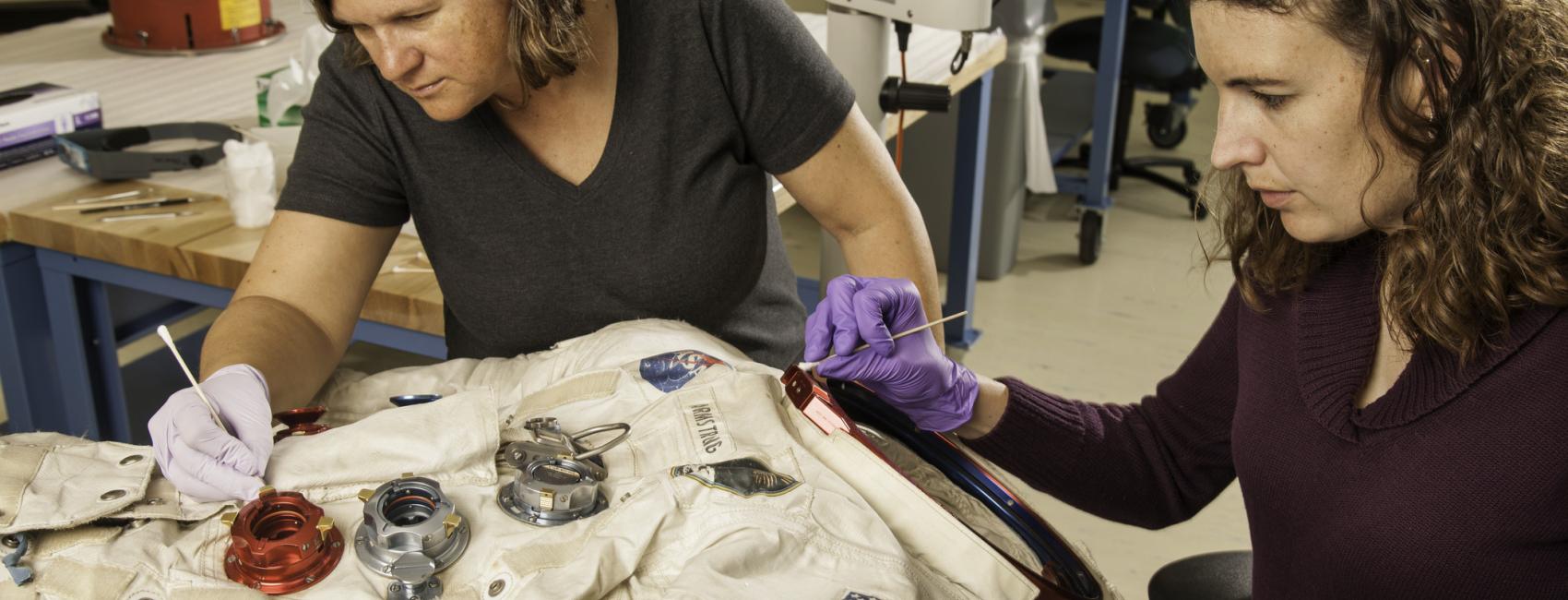
Mar 14, 2022
The history of flight is an ongoing story of “firsts”—the first powered flight, the first transatlantic flight, the first orbital flight, and so on. Each achievement redefines what is “possible.”
The winners of this year’s National Air and Space Museum’s Michael Collins Trophy broke multiple barriers. “Wally Funk often held the title of ‘first’ and ‘only’ throughout her career as a pilot, instructor, and air safety investigator,” says Chris Browne, the Museum’s acting director, while the Mars Ingenuity Helicopter Team “accomplished their ‘first’ with a flight on another planet and expanded the boundaries of planetary exploration.”
Since her first flying lesson in 1948 at age nine, Funk knew that she wanted to fly, despite societal biases steering women away from aviation. After earning multiple pilot certificates and ratings, Funk set her sights even higher in the sky—space. She was one of the top-performing participants in the Woman in Space Program, which was based at the Lovelace Clinic in Albuquerque, and she was the first woman to serve as an air safety investigator with the National Transportation Safety Board. In 2021, her dream of going to space came true when she got a seat on the first crewed suborbital mission of Blue Origin’s New Shepard capsule.
In April 2021, under the direction of project manager MiMi Aung and the Mars Ingenuity Helicopter Team, a small robotic helicopter made the first powered flight on another planet. Delivered to the surface of Mars by the rover Perseverance, the total flight time for the Mars helicopter in 2021 topped 30 minutes—over the course of 18 flights.
Wally Funk and the Mars Ingenuity Helicopter Team received their awards at a ceremony held on March 24 at the Museum’s Steven F. Udvar-Hazy Center in Chantilly, Virginia. The trophy—given annually to recognize both lifetime (Funk) and current (Ingenuity) achievements in aviation and space—features a miniature version of the “Web of Space” sculpture, which was created by John Safer of Washington, D.C.
Joby’s all-electric aircraft is designed to carry four passengers and a pilot—with zero operating emissions.
California-based Joby Aviation announced in January that it had completed the “fastest flight of an eVTOL aircraft to date.” The company’s six-motor air taxi prototype achieved a true airspeed of 205 mph. The achievement comes six months after the eVTOL company announced it had met its objective of flying more than 150 statute miles on a single battery charge, with the eVTOL aircraft staying aloft for over 77 minutes and completing 11 loops. The milestones have brought Joby Aviation closer to its goal of making flying taxis as inexpensive for commuters as yellow cabs. The company has already established partnerships to bring aerial ridesharing services to South Korea and Japan. Joby Aviation’s next goal is to see its eVTOL fly at an altitude of 10,000 feet.
NASA has been working with Lockheed Martin at the aerospace company’s famous Skunk Works facility in Palmdale, California to build the X-59 QueSST—designed to fly at supersonic speeds without producing massive sonic booms (more like sonic thumps). In February, NASA announced that the airplane had gone on a road trip to Lockheed Martin’s facility in Fort Worth, Texas, where the F-16 was built for many years. Engineers say the Texas site has the ideal equipment for subjecting the X-59 to stress tests. Among the objectives was to confirm that the airplane could handle anticipated loads. Since the airplane isn’t actually flying, tests are done with the aircraft sitting on hydraulic jacks connected directly to the structure. Project engineers also used arms that press down on areas of the airplane, such as the top of the wing. The team hopes the first flight of the X-59 will take place by the end of this year.

We rely on the generous support of donors, sponsors, members, and other benefactors to share the history and impact of aviation and spaceflight, educate the public, and inspire future generations. With your help, we can continue to preserve and safeguard the world’s most comprehensive collection of artifacts representing the great achievements of flight and space exploration.
We rely on the generous support of donors, sponsors, members, and other benefactors to share the history and impact of aviation and spaceflight, educate the public, and inspire future generations. With your help, we can continue to preserve and safeguard the world’s most comprehensive collection of artifacts representing the great achievements of flight and space exploration.